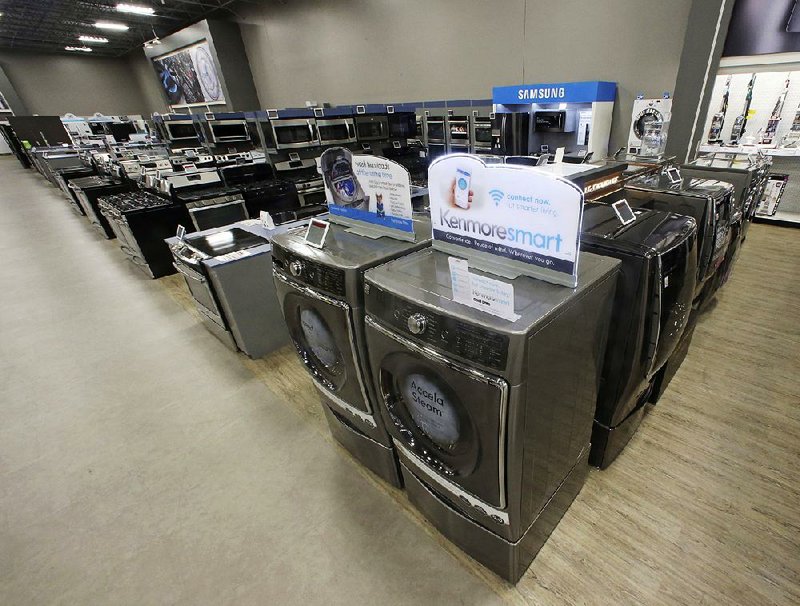WASHINGTON -- Orders for long-lasting U.S. factory goods posted the biggest gain in nearly three years last month, pulled up by a surge in demand for civilian aircraft.
The Commerce Department said Thursday that orders for durable goods -- which are meant to last at least three years -- climbed 6.5 percent in June, reversing two straight monthly drops. The June increase was the biggest since July 2014.
Spending on durable-goods accounts for a small part of American economic output. But changes in durable-goods orders often signal where the economy is headed; so forecasters and investors watch the report closely.
While any uptick in orders is good news for the U.S. economy and for American manufacturers, the June numbers aren't as impressive as they first appear.
The bulk of the increase came from a 131.2 percent surge in orders for civilian aircraft, a category that bounces around wildly from month to month. Boeing Co., the Chicago-based aerospace company, said it received 184 orders for aircraft in June, the most this year and up from 13 the previous month.
Excluding orders for transportation equipment, which rose 19 percent overall, durable-goods orders edged up just 0.2 percent last month.
Moreover, a number that is seen as a harbinger of future business investment -- orders for capital goods, excluding military equipment and aircraft -- slipped 0.1 percent in June.
U.S. industry has rebounded from a slump in late 2015 and early 2016, which was caused by cutbacks in the energy business and a strong dollar that makes U.S. goods costlier in foreign markets. The Institute for Supply Management, a trade group of purchasing managers, said that its manufacturing index rose last month to the highest level since August 2014.
Consumers probably spent enough last quarter to help U.S. growth rebound from a tepid start to the year.
Gross domestic product expanded at a 2.5 percent annualized rate from April to June, according to the median estimate in a Bloomberg survey ahead of figures due today. While that would be an improvement over the first quarter's 1.4 percent, some of the upswing owes to the dissipation of temporary factors such as low heating bills, delayed tax refunds and volatility in inventories. Meanwhile, a gangbusters pace of business investment earlier in 2017 may have eased to a more sustainable rate.
It adds up to a first half in which the economy looks much like it did in years past: growth of around 2 percent, with consumption doing the heavy lifting. The pace is in line with that of the eight-year expansion, even though President Donald Trump's election victory had sent U.S. consumer and business sentiment soaring on hopes that lawmakers would loosen regulation, lower taxes and increase infrastructure spending.
Now reality is setting in, with some of the postelection buoyancy retreating in Washington gridlock on health care and taxes. While a solid job market has helped underpin growth, wage gains remain modest, and key measures such as auto and retail sales have been disappointing in recent months. Economists see U.S. growth easing back to around the average of this expansion after the second quarter.
"It's hard to become too optimistic when you're talking about an economy that's running at about 2 percent," said Michelle Meyer, head of U.S. economics at Bank of America Corp. in New York. "There's very little chance for much acceleration. Nonetheless, growth is ongoing. The unemployment rate has gone down, job growth is fairly steady and the consumer should continue to spend."
Information for this article was contributed by Paul Wiseman of The Associated Press and by Patricia Laya and Shobhana Chandra of Bloomberg News.
Business on 07/28/2017
